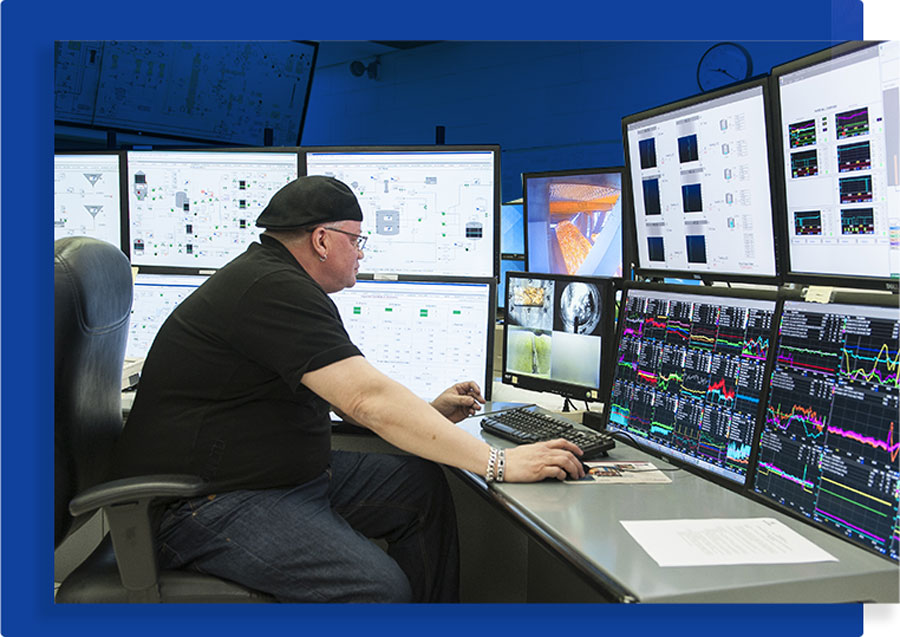
Time-series databases have long been an essential tool for managing plant performance. They are often at the heart of OT data systems, collecting and contextualizing plant equipment data to provide insight into both real-time and historical operating conditions. When paired with trending or visualization tools, these databases play a key role in maintenance, helping to pinpoint potential issues early to prevent costly downtime. They support detailed analysis of operational problems, helping teams understand and address root causes. And, they identify opportunities for process optimization, enabling continuous improvement of plant operations.
Advances in Internet of Things (IoT) technology and cloud computing are changing how time-series data is gathered and applied for industrial operations. The question facing plant operation managers is how to approach gathering and analysis of sensor-based data.
Two classes of time-series databases are currently in use: the well-established operational data infrastructures that use data historians and the new open-source time-series databases. Both classes perform essentially the same function, capturing operational data for analysis. However, the differences in the types of data accumulated, data gathering capabilities, and ease of use do matter to those who rely on the data.
Data Historians: The Traditional Solution
Data historians are the traditional means of capturing operational process data. These are databases designed for recording and logging time-series data from process equipment and automation systems for subsequent analysis. They also ensure secure storage and retrieval of plant process data. Introduced over three decades ago, these systems have found wide usage across various manufacturing sectors, including chemicals, oil and gas, pulp and paper, and pharmaceuticals.
In industrial settings, plant engineers rely on data historians to monitor the multitude of interrelated processes. These tools provide engineers with precise performance metrics for every facet of the plant. This vital information allows them to confirm that operating parameters are adhered to, detect any inefficiencies, and schedule necessary maintenance in a timely manner.
Beyond in-house operations, historian data also fuels external applications from automation vendors, integrating seamlessly even with proprietary software. Bridging the gap between Information Technology (IT) and Operational Technology (OT), operational data derived from historians is a potent tool, informing and shaping decisions in both realms.
Modern Open Source (News - Alert) Time Series Databases
With the IoT boom, there is an increase in demand for time-series databases and the growth of newer, open-source products. Open source is appealing because of the lower upfront costs, and organizations with in-house development opt for open source for specific projects where scalability, ease of use, and real-time data aren’t concerns.
While open-source time-series databases can provide an invaluable platform for experimentation, they may also pose challenges related to performance and security. Additionally, In contrast with traditional historians, the responsibility of regular maintenance and updates for open source software falls on the user. These platforms might also suffer from constraints related to integration and interoperability with existing systems.
An additional limitation of open-source time-series databases lies in their fundamental design. Essentially, these databases serve as a structured repository for disorganized data. However, they lack the industry-specific intentionality inherent in data historians. Unlike data historians, which were designed with industrial use cases such as manufacturing or process engineering in mind, open-source time-series databases are more generic in nature. This can potentially affect their effectiveness and utility in industrial applications.
Choosing the Best Time-Series Option for Your Plant
Choosing between open-source time-series databases and data historians depends on multiple considerations, including data types, speed to access, industry-specific requirements, legacy systems, and digital transformation strategies.
Data historians remain valuable because they have been developed specifically for industrial processes. Modern data historians like dataPARC’s are intended to deliver fast performance and for integration with other processes. For example, the newest data historian from dataPARC was designed to quickly export data to train cloud-based artificial intelligence/machine learning (AI/ML) models. Using AI/ML simulations, industrial processes can be modeled to quickly reveal choke points, identify potential points of failure, and for preventive equipment maintenance.
As open-source time-series databases proliferate, they won’t replace data historians. The two time-series databases are complementary, filling in data gaps. Data historians will continue to provide industry process data with an operational perspective, and innovative tools like dataPARC’s data historian will give plant engineers data they can turn into actionable insight.
